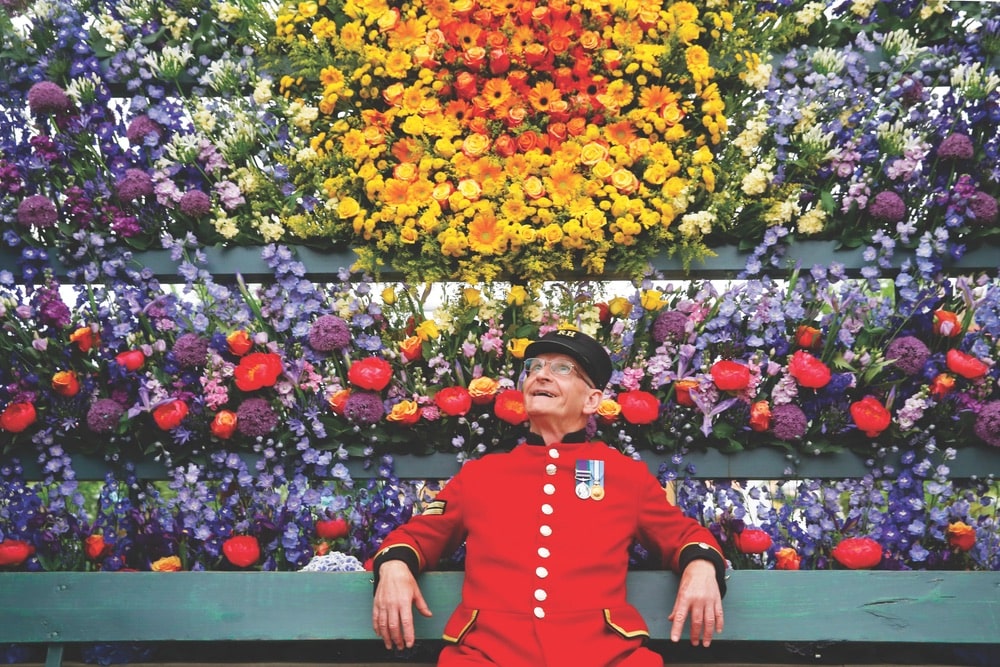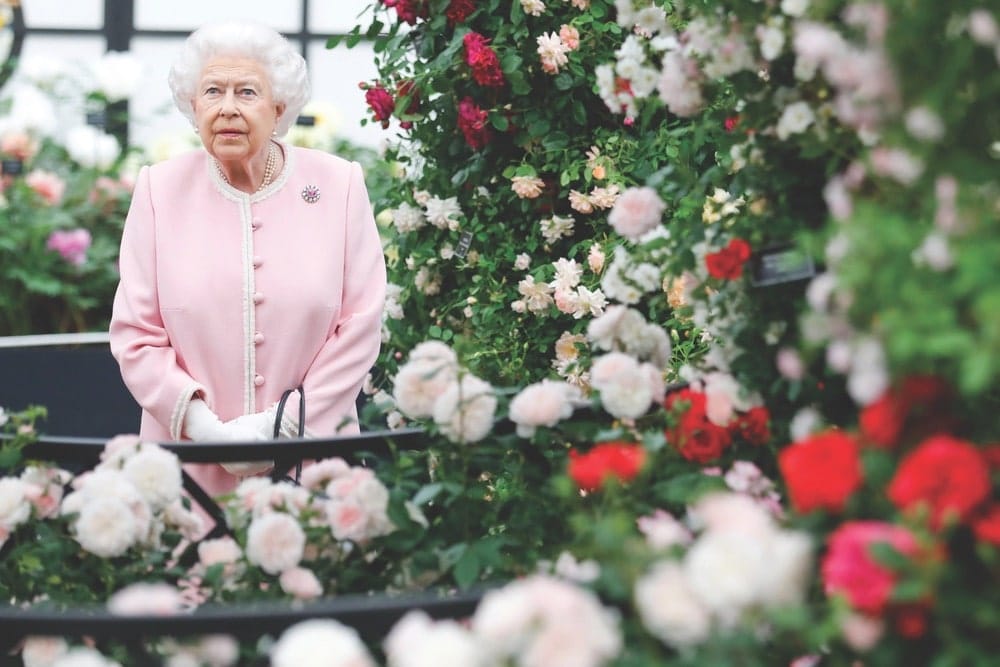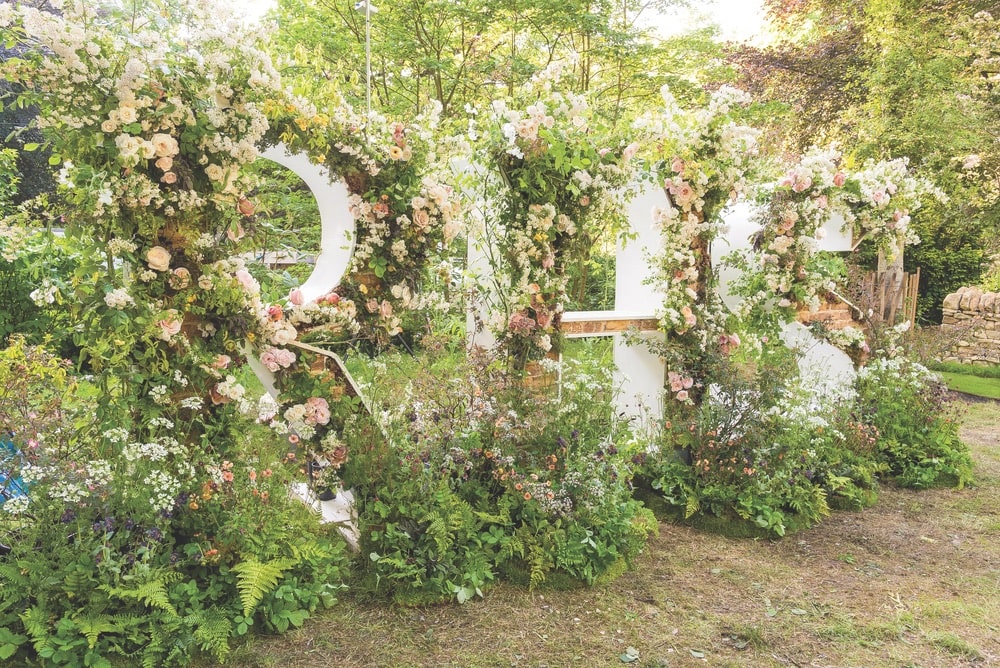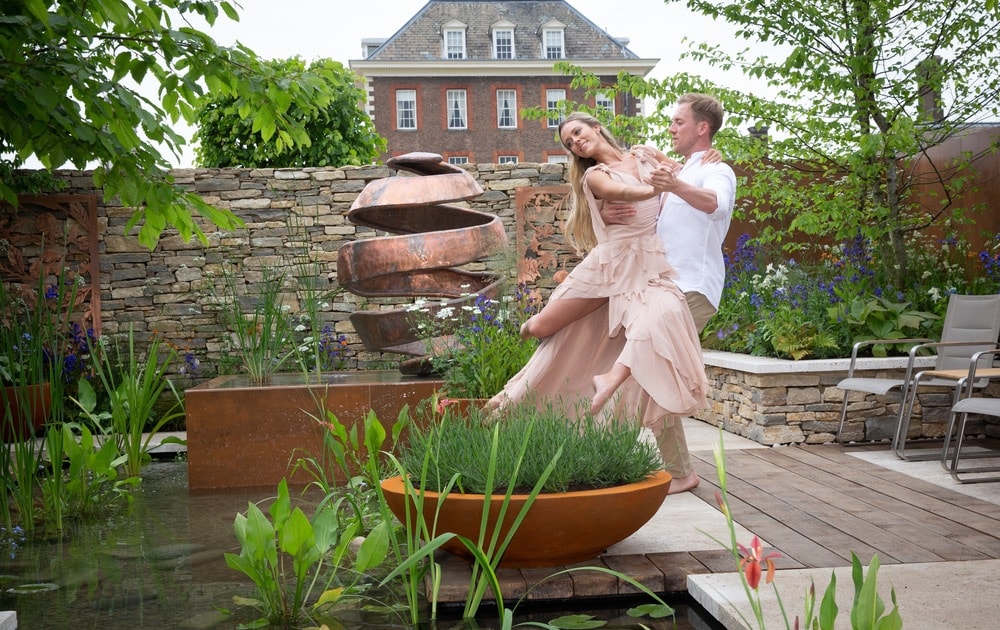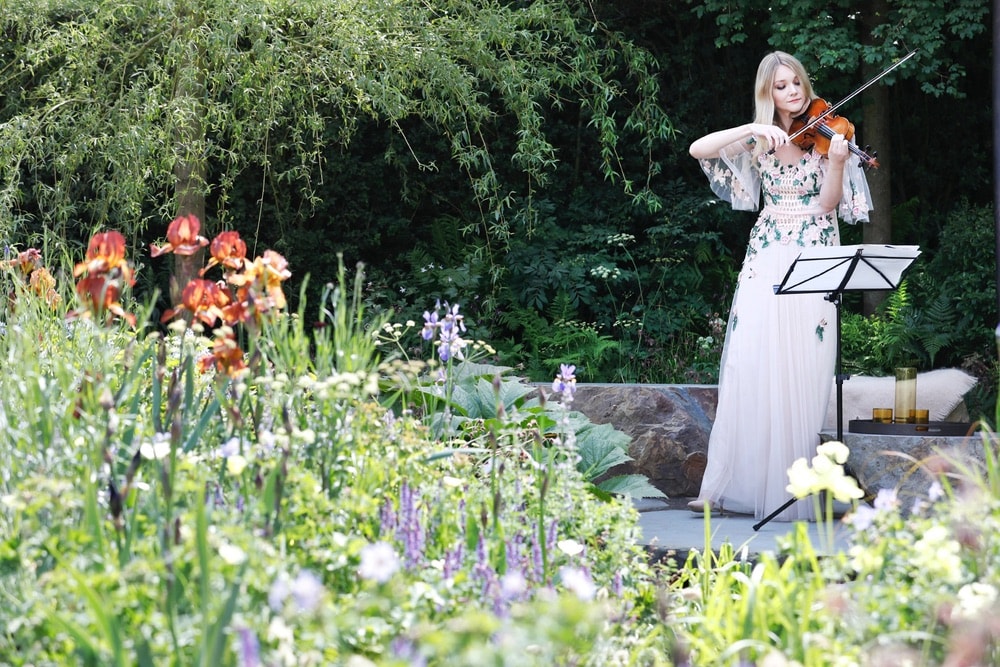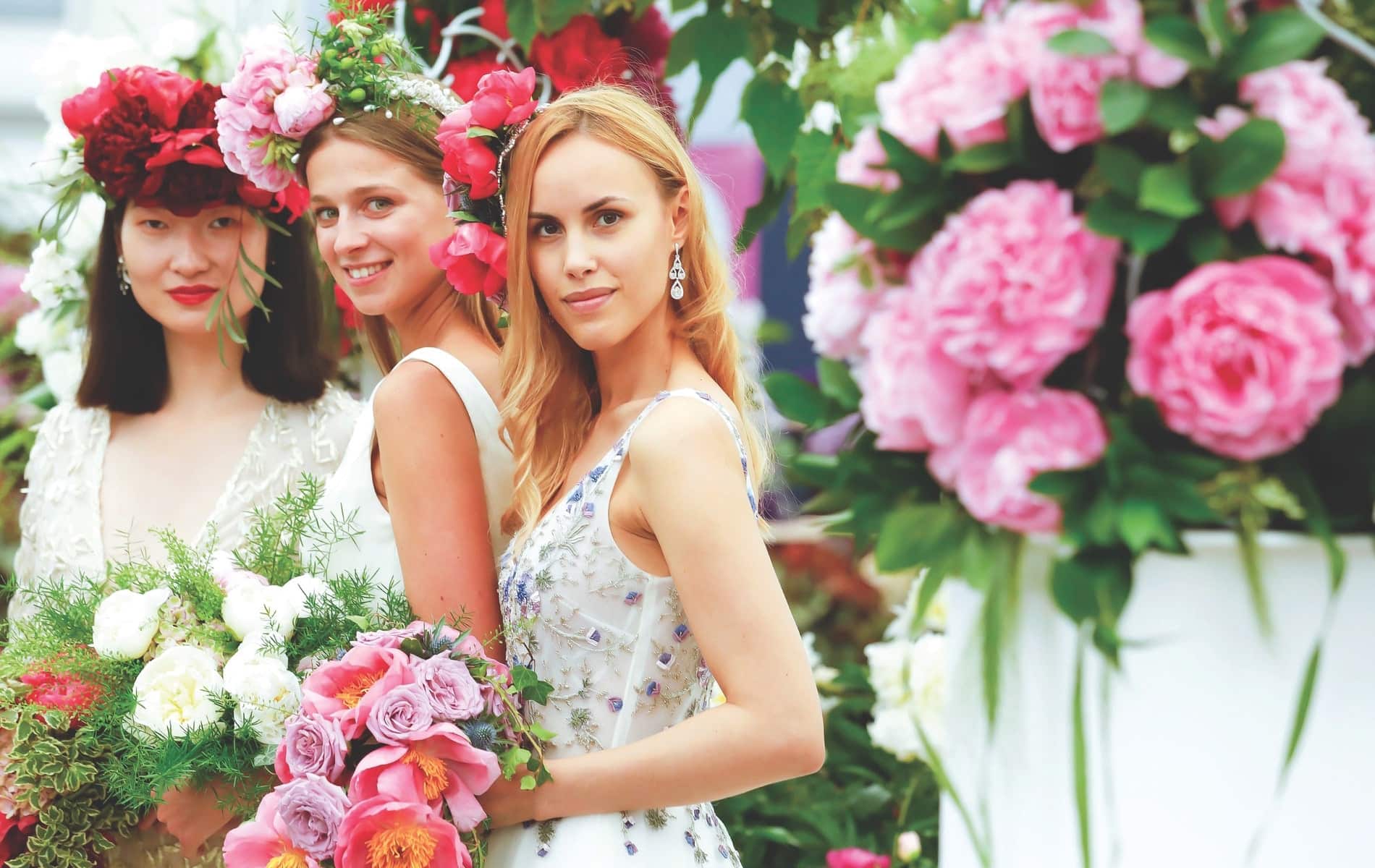
vie-magazine-chelsea-flower-show-royal-horticultural-society-hero-min
Models wear bridal designs by Alan Hannah for Primrose Hall Nursery’s Love & Romance exhibition during press day at the RHS Chelsea Flower Show 2018 in London. | Photo by Luke MacGregor / RHS
Style Blooms Eternal at the Chelsea Flower Show
By Suzanne Pollak | Photography courtesy of the Royal Horticultural Society
I first visited the Chelsea Flower Show with the so-called Wiggles Club, Winterthur Museum’s Garden Club. I was struck by the commitment, the diversity, and the staggering beauty of the most famous flower show in the world, and my brain buzzed with the inspiration for changes I would make to my garden in Beaufort, South Carolina. Reality didn’t seem to apply until I put pen to paper. Create a sunken garden in the Low Country? Not likely! And my growing zone didn’t match those of the flower show. I realized that some experiences are meant to showcase mystery, magic, and dreams—not necessarily to be acted upon. The Chelsea Flower Show is not only a requisite for any serious landscaper—it is also glamorous and British to its very core. It can fire imaginations with more active visual inspiration per square inch than most museums, zoos, or sporting events anywhere.
The Chelsea Flower Show, or Royal Horticulture Society’s Great Spring Show, has been held on the grounds of the Royal Hospital since 1912 and patronized by royal women ever since. Queen Alexandra, the mother of King George V, brought two of her children. Queen Elizabeth II has been a patron of the Royal Horticultural Society, which organizes the event, since 1952. This year, the Duchess of Cambridge, Kate Middleton, will be the first royal to design her own garden.
What is it that makes this flower show so special? It’s more than queens and duchesses. Designs, such as one suspended in air in 2011 and one made of three hundred thousand individually crocheted poppies in 2016, are not simply a passive art experience. The attendees of the flower show become active participants. Our visual sense takes in the exhibits like we do the portraits at the Tate or the National Portrait Gallery; beyond our eyes, our imaginations might leap into action and plot changes to our gardens. Some people take it a step further and become part of the show by wearing fashions with a theme. How many times can adults wear their inner passions without looking loony? How many opportunities do we have to be fierce, fabulous, and maybe a tiny bit frivolous? The show is the venue to see the intermingling of artistic visions: the flowers, the garden designs, the crowd, and the fashion choices. It is like a natural museum come to life—a living exhibit and a contemporary art installation all at once.
The show has no official dress code, but like other British traditions such as Ascot, Wimbledon, and the Henley Regatta, the ladies in the UK know the unwritten rules. As an American, I was confused. When I flew to Henley to watch two of my sons’ row crew, I found myself denied entry to my ticketed seat. My section enforced a strict hem length, which I knew about but embarrassingly failed to follow to the letter. My expensive dress—bought specially for the occasion—reached the lower part of my kneecap but not the exact bottom of my knee. In full view of a crowd, I was forced to rip out my hem because of a quarter-inch difference. England is a country that takes code seriously.
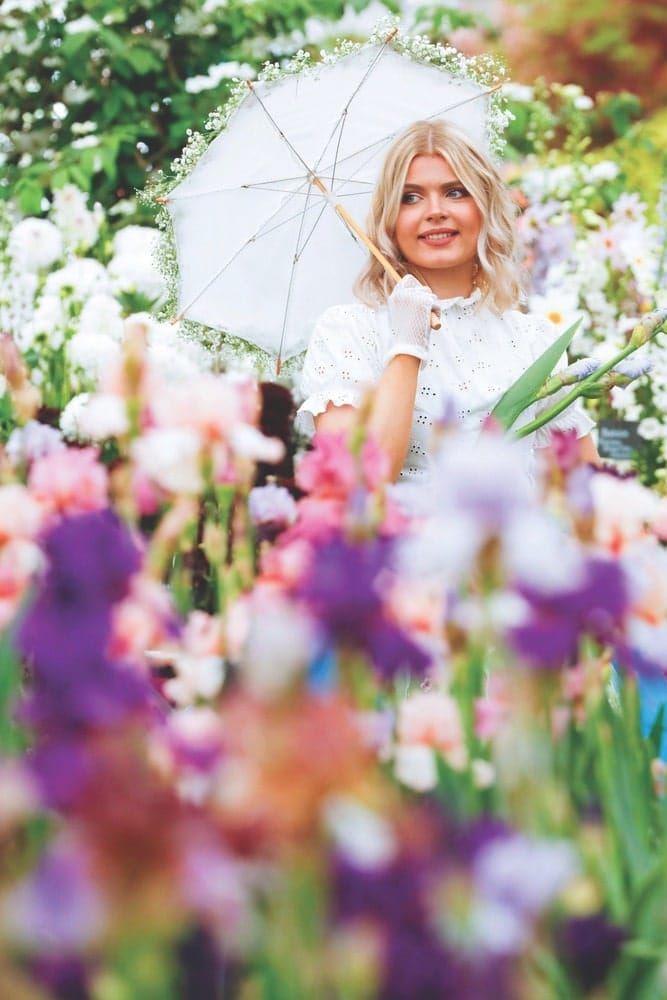
Model Columbine Leathart at the Cayeux Iris exhibition | Photo by Luke MacGregor / RHS
I didn’t think about nature-themed fashion before going to the Chelsea Flower Show a few years later, but I saw botanical dresses everywhere. The garden designers explored new ways to present flowers and landscapes in settings one may never have thought of, and the attendees, out of respect to the show, brought nature into what they wore. It was often less literal than just floral dresses, although botany and biology were themes. Flowers and form, function, and beauty joined.
The fashion on display is tongue-in-cheek, spirited, and alive—but frankly, what in nature is not? Marissa Hartington, the owner of Marissa Collections in Naples, Florida, says, “Flowers have a fantastic influence on fashion. They are reflected in embellishments, patterns, and shapes—think about the tulip skirt. That said, I find the most brilliant colors on the runways, either in isolation or combination, are found in the garden and not in the human mind. Of course, the most sublime fashion occurs when appreciation of nature is combined with the human creative spirit and brought to the fashion world.”
It is like a natural museum come to life—a living exhibit and a contemporary art installation all at once.
The botanical themes in dress and jewels worn by people at the show add layers of moving art to the surroundings. Gothic details like combat boots juxtapose dark florals. Spunky fashionistas are adorned with tough horticulture vibes, such as twisted blooms on a blazer, thorned roses on a jacket, or night gardens planted on a dress. The best inspiration comes from nature. Peter Pilotto creates clothes in fabrics the colors of sunsets and seemingly made of liquid. Wisteria vines wrap around his organza gowns. At Erdem, it’s all about flowers, floral embroidery, ladybug drop earrings, and other nature-based prints. Dolce & Gabbana is king of sexy flowers and roses, leopard print, and trompe l’oeil.
Fashion-forward men wanting to go with the nature theme need look no further than Gucci. Heterocera (insects related to moths), Chiroptera (winged mammals like bats), and Scarabaeidae (insect family consisting of over thirty thousand types of beetles) are fantastical elements embroidered and sewn on the brand’s sweaters and jackets.
- Chelsea Pensioner Paul Whittick enjoys the display at the Marks & Spencer Floral Market exhibition during press day at the RHS Chelsea Flower Show 2018.
- Britain’s Queen Elizabeth views the Peter Beales Roses exhibition at the RHS Chelsea Flower Show 2018. | Photo by Luke MacGregor / RHS
- RHS floral letter display, designed by Lucy Hunter for the Chelsea Flower Show Artisan Garden area 2018 | Photo by Tim Sandall / RHS
For those who prefer to wear solid colors, there are still pairs of feet and ears to address, adorn, and play up. Not wanting to empty the bank account? Anthropologie has plenty of trendy rose headbands and even leaf-patterned cork shoes that look so comfortable, a day on one’s feet could be a walk in the park. A step up in accessories might be a phantasmagorical scarf designed by Hermès, and a crossbody bag of intricately woven raffia is an understated way to incorporate texture. Meanwhile, Irene Neuwirth creates botanical earrings in a kaleidoscope of colors.
The Queen walks through the show in perfection, wearing her signature dignified pale pastel-colored suits and matching hats. The Queen doesn’t need embellishments; she is perfect as is. Kate wears pretty flowy and fitted floral dresses to the Chelsea Garden Show. The royals cannot go crazy, but we can. We can be freer and looser and wilder for at least one day in our lives. Have fun looking, learning, and letting the inner you out through your look. The Chelsea Flower Show is the place to see and be seen, with floral inspiration in every direction.
— V —
Visit RHS.org.uk to learn more about the Chelsea Flower Show and other Royal Horticultural Society events.
Suzanne Pollak, a mentor and lecturer in the fields of home, hearth, and hospitality, is the founder and dean of the Charleston Academy of Domestic Pursuits. She is the coauthor of Entertaining for Dummies, The Pat Conroy Cookbook, and The Charleston Academy of Domestic Pursuits: A Handbook of Etiquette with Recipes. Born into a diplomatic family, Pollak was raised in Africa, where her parents hosted multiple parties every week. Her South Carolina homes have been featured in the Wall Street Journal “Mansion” section and Town & Country magazine.
Share This Story!
KEEP UP WITH THE LATEST STORIES FROM VIE



